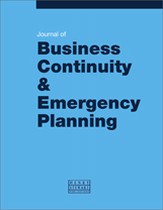Estimated value realisation: A comparison between standard and adaptive business continuity approaches
Abstract
The adaptive business continuity (BC) approach may provide value at least 11 times faster than historical BC approaches that are modelled on existing standards such as DRI’s Professional Practices and ANSI standard ISO 22301. By analysing the life cycle of standard BC practices as outlined in the BCI’s ‘Good Practice Guide’, estimating the hours it would take a hypothetical organisation to execute those practices, and then estimating the value gained from each practice, it is possible to calculate a time to value (TTV) based on the estimates for the two approaches. As TTV calculations are relatively new to the BC industry, this article anticipates and addresses several possible objections. The resulting calculations, while potentially subject to a wide margin of error, indicate that the adaptive BC approach is significantly faster at providing value. In some BC life-cycle phases, the TTV of an adaptive BC approach may be 18–20 times faster. These results have broad and significant implications in the preparedness industry, several of which are highlighted in the conclusion of the article.
The full article is available to subscribers to the journal.
Author's Biography
David Lindstedt is a frequent contributor to the Journal of Business Continuity and Emergency Planning and has presented at numerous local and international conferences. He is the founder of Readiness Analytics and creator of software to measure disaster preparedness. His most recent efforts focus on establishing a foundation for Continuity 2.0.
Citation
Lindstedt, David (2020, December 1). Estimated value realisation: A comparison between standard and adaptive business continuity approaches. In the Journal of Business Continuity & Emergency Planning, Volume 14, Issue 2. https://doi.org/10.69554/WRWA7311.Publications LLP
